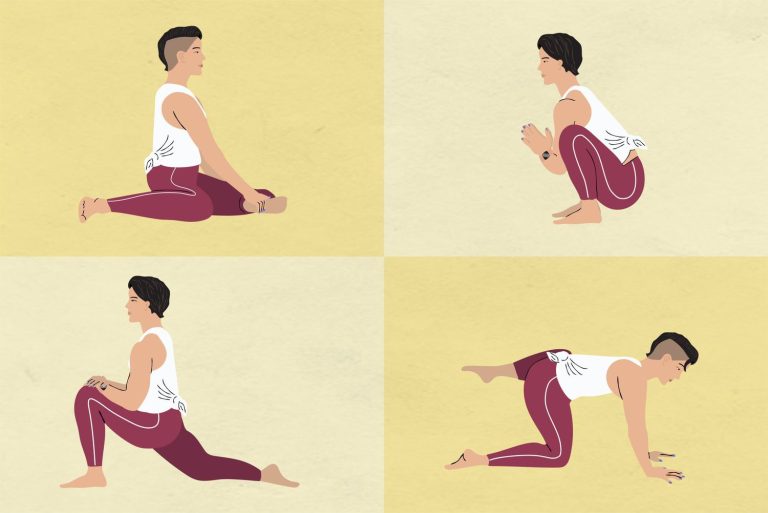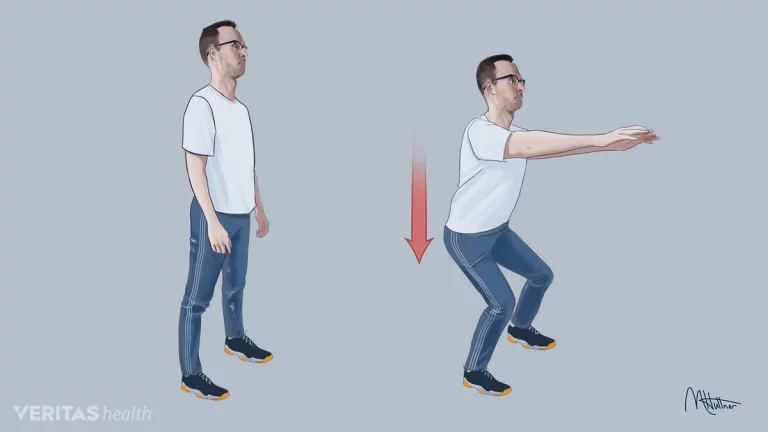Hip Tendonitis vs Bursitis: Causes, Symptoms, and Treatment
Are you someone who spends hours perfecting your dance moves or hitting the gym to achieve your fitness goals? If so, then you’re probably no stranger to the occasional aches and pains that can come with an active lifestyle.
One common culprit that may have crossed your path is hip tendonitis or bursitis. These seemingly similar conditions can put a damper on your activities, leaving you wondering what your next move should be.
In this article, we’ll explore the difference between hip tendonitis and bursitis, and delve into the various treatment options that can have you back on your feet in no time.
hip tendonitis vs bursitis
Hip tendonitis and bursitis are both conditions involving inflammation of soft tissue around the hip joint. Tendinitis specifically refers to inflammation of the tendon, while bursitis refers to inflammation of the bursa.
Tendinitis is typically caused by acute injury or repetitive motion, while bursitis can have various causes such as infection or underlying conditions like gout or rheumatoid arthritis. Treatment for both conditions involves resting the affected area, applying ice packs, and taking nonsteroidal anti-inflammatory drugs.
Over-the-counter pain relievers like naproxen and aspirin can provide relief, but Tylenol only reduces pain and does not address inflammation. Cortisone injections may be recommended for persistent symptoms, although they come with a risk of tendon weakness and rupture.
Physical therapy is recommended to strengthen the surrounding muscles and prevent recurrences. In cases where bursitis is caused by infection, antibiotics may be prescribed.
Treating underlying conditions like arthritis can also help in bursitis treatment. Hip tendonitis is characterized by pain along the tendon, hip stiffness, and pain during muscle use.
On the other hand, hip bursitis is characterized by pain on the outside of the thigh, potential swelling, and pain during specific activities. A physical therapist should evaluate the issue and provide an appropriate treatment plan which may include initial treatment with ice, anti-inflammatories, and gentle stretches.
Manual techniques performed by a physical therapist can assist in the healing process, and strengthening exercises will be prescribed to provide support to the hip joint. Recovery should be gradual to prevent further injury, and individual variations in symptoms and needs should be considered when seeking treatment.
Ultimately, a gradual return to previous activities is important to prevent re-injury.
Key Points:
- Hip tendonitis and bursitis both involve inflammation of soft tissue around the hip joint.
- Tendinitis is caused by acute injury or repetitive motion, while bursitis can have various causes such as infection or underlying conditions.
- Treatment for both conditions includes:
- Resting the affected area
- Applying ice packs
- Taking nonsteroidal anti-inflammatory drugs.
- Cortisone injections may be recommended for persistent symptoms, but they come with a risk of tendon weakness and rupture.
- Physical therapy is recommended for both conditions to strengthen muscles and prevent recurrences.
- Treating underlying conditions like arthritis can help in the treatment of bursitis.
Sources
https://www.verywellhealth.com/how-are-tendonitis-and-bursitis-different-2549836
https://loudounsportstherapy.com/hip-tendonitis-bursitis-5-7-2020/
https://www.thechristhospital.com/services/joint-and-spine/your-care-and-treatment/hip/tendonitis-and-bursitis
https://www.mayoclinic.org/diseases-conditions/bursitis/symptoms-causes/syc-20353242
Check this out:
💡 Pro Tips:
1. Pay attention to differentiating symptoms: While both hip tendonitis and bursitis involve inflammation of soft tissue around the hip, they have different specific symptoms. Tendinitis is typically characterized by pain along the tendon, hip stiffness, and pain when using the muscle attached to the tendon. Bursitis, on the other hand, is characterized by pain on the outside of the thigh, possible swelling, and pain during certain activities. Recognizing these differences can help in accurately diagnosing and treating the condition.
2. Seek professional evaluation and treatment: It is important to have a physical therapist or healthcare professional evaluate the issue and provide the best treatment plan. They can assess the specific problem and tailor the treatment to meet your individual needs.
3. Gradual return to activities: After receiving treatment for hip tendonitis or bursitis, it is crucial to gradually return to previous activities to prevent re-injury. Rushing the recovery process can increase the risk of further damage or flare-ups. It is important to listen to your body and take it slow when getting back to physical activity.
4. Consider manual techniques: In addition to traditional treatments such as rest, ice, and stretches, manual techniques performed by a physical therapist can assist with the healing process. These techniques may include manual manipulation, massage, or trigger point release, which can help alleviate pain and improve function.
5. Understand individual variations: Everyone’s experience with hip tendonitis or bursitis may be slightly different. Factors such as age, overall health, and lifestyle can impact the severity of symptoms and the effectiveness of treatment. It is important to discuss your specific symptoms and needs with a healthcare professional to ensure the best outcome.
Tendinitis And Bursitis: Understanding The Difference
Tendinitis and bursitis are two common conditions that involve inflammation of the soft tissues surrounding muscles and bones. Although they share similarities, it is essential to understand the fundamental differences between these conditions.
Tendinitis specifically refers to the inflammation of the tendon, which is the fibrous tissue that connects muscles to bones. On the other hand, bursitis refers to the inflammation of the bursa, which is a small fluid-filled sac that acts as a cushion between tendons, muscles, and bones.
Both tendons and bursae play vital roles in joint movement and function.
The symptoms of both conditions can be similar, including pain, swelling, and limited range of motion. However, specific signs help differentiate between hip tendonitis and bursitis.
Hip tendonitis is characterized by pain along the tendon, hip stiffness, and discomfort when using the muscle attached to the affected tendon. On the other hand, hip bursitis is characterized by pain on the outside of the thigh, possible swelling, and discomfort during specific activities.
Causes And Risk Factors Of Tendinitis And Bursitis
Tendinitis is most commonly caused by acute injury or repetitive motion. Athletes and individuals who engage in activities involving repetitive movements, such as runners, tennis players, and golfers, are particularly prone to developing tendinitis.
Poor technique or inadequate warm-up and stretching routines can put additional strain on the tendons, exacerbating the risk.
In contrast, bursitis can have several causes, including acute injury, repetitive motion, infection, or underlying medical conditions. Infection, gout, or rheumatoid arthritis can contribute to the development of bursitis.
Furthermore, prolonged pressure or friction on the bursa, such as sitting on hard surfaces for extended periods, can also lead to bursitis.
Treatment Options For Tendinitis And Bursitis
When it comes to treating tendinitis and bursitis, early intervention is crucial for successful outcomes. Treatment options for both conditions primarily focus on reducing pain, inflammation, and promoting healing.
Initial treatment usually involves resting the affected area and avoiding activities that aggravate symptoms. Applying ice packs to the affected area can help reduce pain and inflammation.
Nonsteroidal anti-inflammatory drugs (NSAIDs), such as ibuprofen or naproxen, are commonly used to alleviate pain and reduce swelling.
It’s important to note that while over-the-counter pain relievers like naproxen and aspirin can provide relief, they only address the pain and do not directly reduce inflammation. For persistent symptoms, cortisone injections may be considered. However, it is important to use caution with cortisone injections, as they can weaken tendons and increase the risk of rupture.
The Role Of Physical Therapy In Tendinitis And Bursitis Treatment
Physical therapy plays a vital role in the comprehensive treatment of tendinitis and bursitis. A skilled physical therapist can evaluate the condition, identify contributing factors, and design an individualized treatment plan to alleviate symptoms and promote healing.
In the initial stages of treatment, physical therapists may recommend the use of ice packs, gentle stretches, and anti-inflammatory medications to reduce pain and inflammation.
As the condition improves, strengthening exercises are prescribed to provide support and stability to the affected joint. These exercises target the surrounding muscles, helping to prevent future recurrences.
The physical therapist will determine the appropriate progression and intensity of exercises based on the individual’s symptoms and needs.
Recovery And Prevention: Gradual Return To Activities And Individualized Care
Recovery from hip tendonitis or bursitis should not be rushed to avoid further injury. Each individual’s healing timeline may vary, depending on the severity of the condition and adherence to the prescribed treatment plan.
It is crucial to follow the guidance of a physical therapist or healthcare professional to ensure a safe and effective recovery process.
Returning to previous activities gradually is essential to prevent re-injury. Rushing back into sports or other strenuous activities too soon can prolong the healing process or lead to further damage.
A gradual increase in activity levels, monitored by a physical therapist, will help rebuild strength and endurance while reducing the risk of recurrence.
Individualized care is key when it comes to treating hip tendonitis and bursitis. Each individual may experience variations in symptoms and require tailored treatment approaches.
Working closely with a physical therapist and medical team to develop a comprehensive treatment plan can lead to improved outcomes and a faster return to normal function.
In conclusion, hip tendonitis and bursitis are conditions involving inflammation of soft tissue around muscles and bones. Understanding the differences between these two conditions is crucial for proper diagnosis and treatment.
Resting the affected area, applying ice packs, and taking nonsteroidal anti-inflammatory drugs are common treatment options. Physical therapy plays a significant role in the comprehensive treatment of these conditions, focusing on reducing symptoms, promoting healing, and preventing recurrence.
Gradual return to activities and individualized care are essential for successful recovery.







